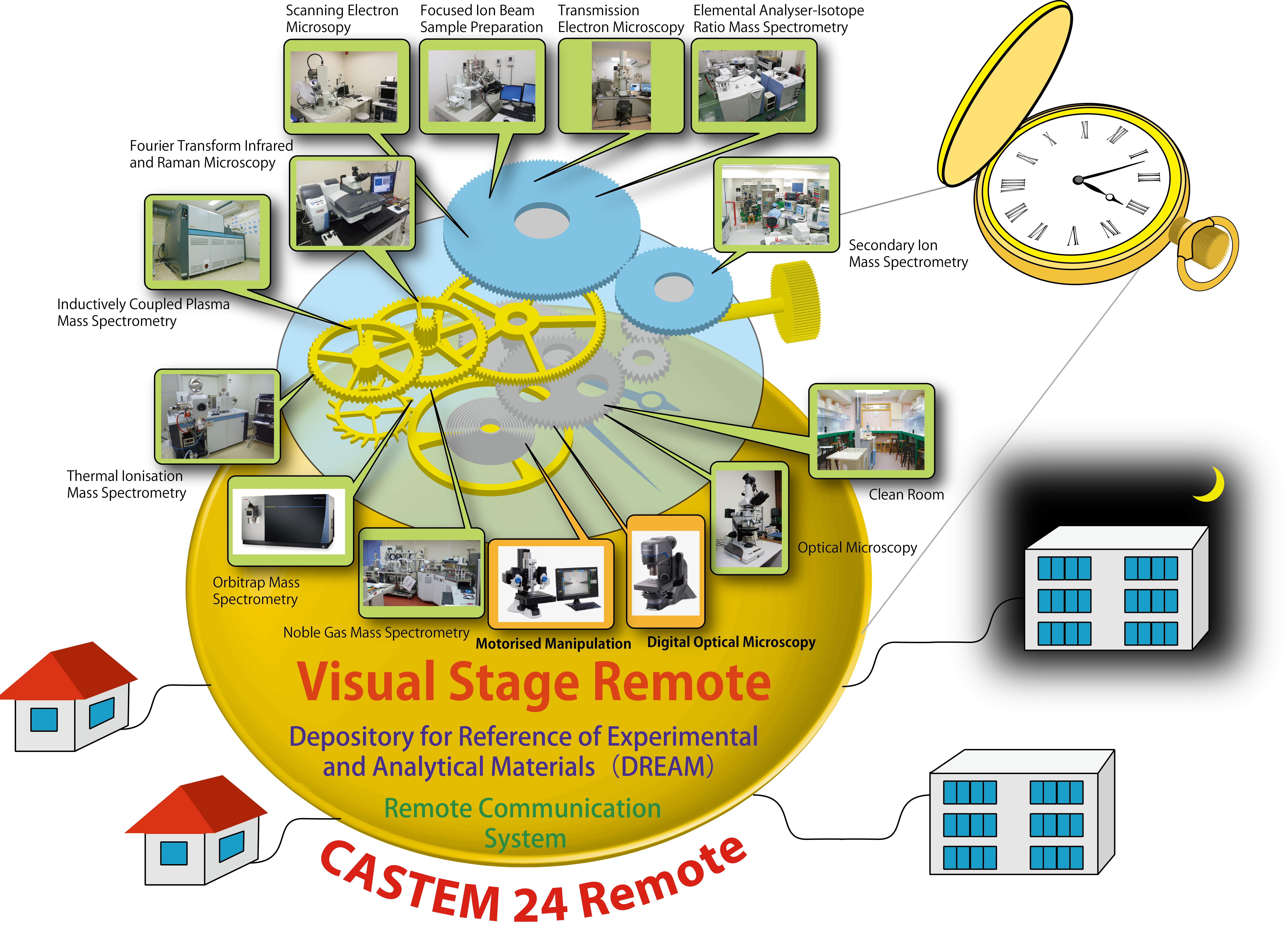CASTEM 24 Remote: the next generation of CASTEM
11/27/2020
The Pheasant Memorial Laboratory (PML) is pleased to announce the initiation of the next generation of analytical system. Our vision is to open up the comprehensive analytical system for terrestrial and extraterrestrial materials (CASTEM) to domestic and international industry and academic collaborators through remote access and improved analytical coordination and data handling features. In this way, extra revenue can be generated to support the laboratory and further our aims as a core facility of the Japan joint research centre for joint use.
CASTEM has been used to achieve a multitude of successful research outcomes in a variety of scientific disciplines, including earth science, planetary science, environmental science and medicine. In particular, CASTEM was employed to study samples of Itokawa brought back to Earth by the Hayabusa mission (the first asteroid samples returned to Earth). Furthermore, PML has been designated as a Phase 2 curation facility for the Hayabusa2 mission and CASTEM will be applied to the samples returned from the target asteroid Ryugu, which have now been returned to Earth.
In its current form CASTEM is comprised of 22 instruments and ancillary equipment and organic and inorganic clean rooms. These instruments and facilities can be used sequentially to achieve a truly comprehensive analysis of any given material. Two dimensional surfaces can be aligned and coordinated between instruments, using the visual stage system (VSS) and the collected data stored and made available for visualisation and manipulation within the depository for reference of experimental and analytical materials (DREAM). Therefore, CASTEM represents the perfect tool to study materials relevant to almost any discipline/industry, such as manufacturers/researchers of solid state batteries, semiconductors, composite materials and pharmaceuticals. Indeed, several major domestic materials companies are interested in utilising CASTEM.
However, at current CASTEM is only used for 50-60 % of the day, due to the limited timespan over which students, postdocs, staff and visiting researchers can work. If CASTEM could be opened up to other users, both domestically and internationally, then the full potential of CASTEM would be realised. To achieve this aim, 3 areas or links will be established: 1). The Analysis Platform Data Link, in which the VSS and DREAM software packages will be linked and upgraded; 2). The Remote Communication Link will allow for communication between remote users and onsite staff; 3). The Remote Device Operation Link will enable remote users to operate the instruments within PML as if they were onsite.
Furthermore, a new Multi-functional Automated Organic sample Preparation System (MAOPS), will enable the speedy preparation of standards and samples. MAOPS will be able to automatically weigh, extract, reduce and derivatise samples ready for high performance liquid chromatography mass spectrometry (HPLC-MS) or gas chromatography mass spectrometry (GC-MS). MAOPS will significantly reduce sample preparation times and allow users to prepare their own samples without needing to be onsite. The upgraded CASTEM will be termed CASTEM 24 Remote, to reflect the optimised, remote and round the clock access this new generation of CASTEM will bring. CASTEM 24 will make PML a laboratory without borders.
